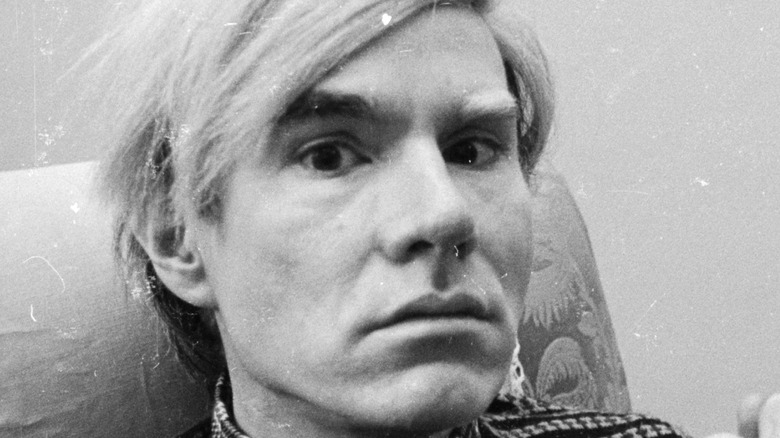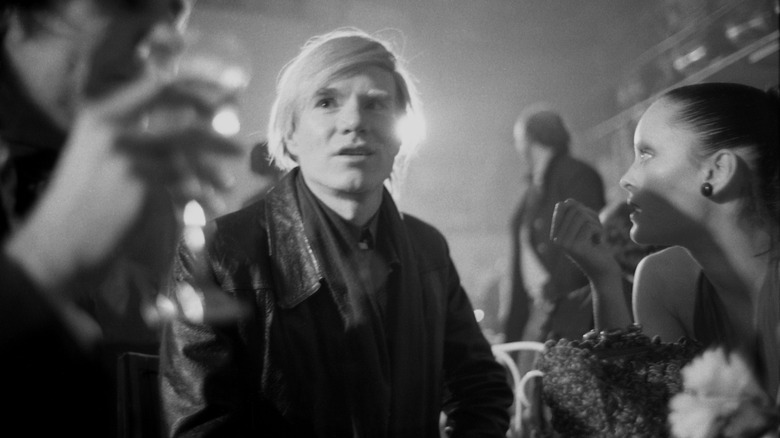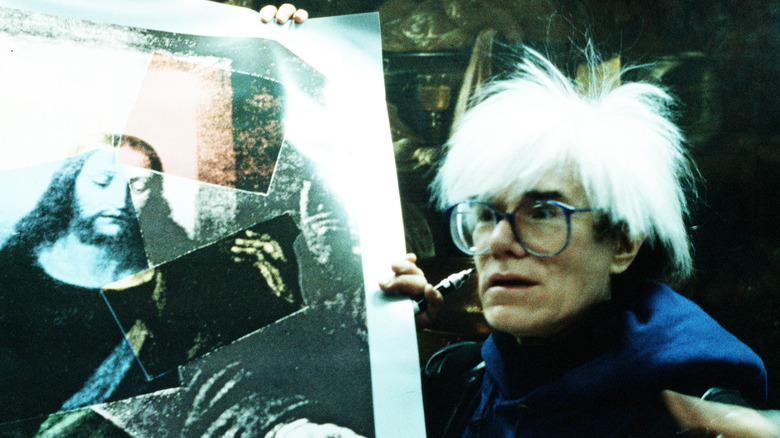Why Andy Warhol's Original Factory Was Referred To As The Silver Factory
The year is 1963. The place is New York City. You've been cordially invited to a party at 231 East 47th Street in Midtown Manhattan where, upon ascending to the building's fifth floor, you behold a whole circus of eccentricities and painted personalities who appear before you like the deranged populace of some massive bohemian madhouse unleashed upon the world. A walking enigma of a man with ghost white hair and glasses like giant orbs steps forward and extends his hand in a gesture of cordial hospitality: "Hello, I'm Andy Warhol. Welcome to The Silver Factory."
According to Art Life, Warhol's "Factory" was a mecca for creative endeavors and eclectic expression that predominated New York's art scene throughout the 1960s, '70s, and '80s. The renowned Pop Artist played host to a myriad of quirky individuals who all sought refuge in a place that, to them, was something of a madcap cathedral. "I was a product of Andy Warhol's Factory. All I did was sit there and observe these incredibly talented and creative people who were continually making art, and it was impossible not to be affected by that," Lou Reed, venerated frontman of The Velvet Underground, once said.
What happened at The Silver Factory?
While The Factory's location changed at different junctures throughout the years, the walls within the first facility on East 47th Street — still referred to as The Silver Factory — bore witness to some remarkable feats. Andy Warhol conceived his iconic soup can portrait at this location, as well as the definitive Marilyn Monroe piece that you've undoubtedly seen many times before. It's also where groups like The Velvet Underground cut their teeth and breached the surface of the musical world (per Revolver Warhol Gallery).
The Silver Factory hosted parties, workshops, and other gatherings that facilitates a new cultural front of creative experimentation. Notable artists and celebrities such as Edie Sedgwick, Candy Darling, Ultra Violet, and International Velvet were regular attendees. It's also where Warhol produced hundreds experimental films that would ultimately constitute a major portion of his artistic legacy (via Revolver Warhol Gallery).
Why was it called The Silver Factory?
"The Factory was about 50 by 100 feet, and it had windows along 47th Street looking south, just the place to launch a cultural revolution," Andy Warhol shared about The Silver Factory when it was still in its rudimentary stage. "It was basically crumbling — the walls especially were in bad shape." Later on, he'd dress it up in an flashy way that would earn the studio its shiny namesake (per Revolver Warhol Gallery).
Apparently, it was photographer Billy Name who plastered The Factory's walls with of silver spray paint and aluminum foil per the request of its eccentric overseer (via Art Life). Andy Warhol reportedly had an infatuation with silver and what it chromatically represented: boundlessness of the mind and fearless creativity. He stated that "Silver was the future," in his memoir, "Popism: The Warhol 60s," and that it also represented the past and the reflective narcissism necessary for artists to look inward and create something of value based on what they saw. Its connotation to astronaut attire and space exploration was a parallel that also enticed Warhol enough to have his entire facility embalmed in a metallic glaze (per Revolver Warhol Gallery).


